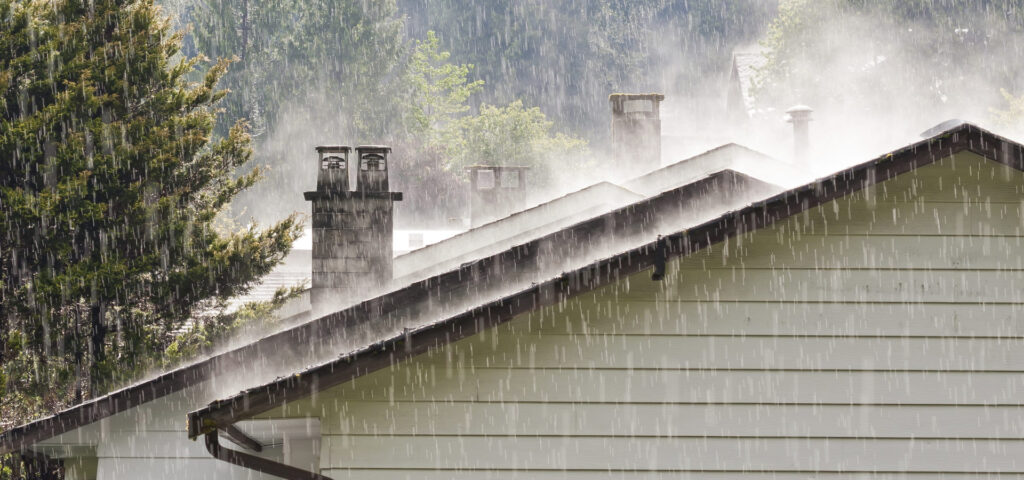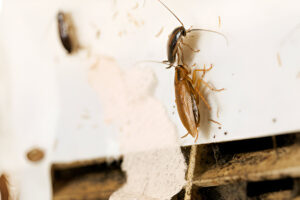Chimney leaks in heavy rain can be a frustrating and potentially damaging problem for homeowners. When water finds its way into your chimney, it can cause structural damage, rust various chimney parts, and even damage your property. To effectively address this issue, it is vital to understand the common causes of chimney leaks during heavy rain and take appropriate preventive measures.
What is Chimney Leaking?
Chimney leaking refers to the phenomenon where water enters the chimney structure or surrounding areas during rainfall or other instances of water exposure. It is a typical problem homeowners face and can lead to various issues if not addressed promptly.
Unveiling the Mystery – Common Chimney Leak Causes
Here are the primary reasons why chimney leaks occur during heavy rain;
Damaged Chimney Crown: A damaged chimney crown is one of the most common causes of leaks in heavy rain. The chimney crown, a concrete slab at the top of the chimney, can gradually develop cracks due to weather and debris exposure.
Faulty Flashing: Flashing is a waterproof barrier that prevents water from entering the intersection between the chimney and the roof. Water can penetrate the chimney during heavy rain if the flashing is improperly installed or deteriorated.
Cracked Chimney Masonry: Over time, the masonry materials used in chimneys can develop cracks and gaps. These cracks may result from age, shifting foundations, or exposure to freeze-thaw cycles.
Damaged Chimney Cap: A chimney cap is a protective cover on top of the chimney, preventing water, debris, and animals from getting into the flue. If the chimney cap is damaged, missing, or improperly installed, rainwater can directly enter the chimney, leading to leaks during heavy rain.
Failed Chimney Lining: The chimney lining provides a protective barrier between the flue gasses and the chimney structure. If the lining is cracked, deteriorated, or missing, rainwater can penetrate the chimney and cause leaks during heavy rain.
Roof Leaks Around the Chimney: In some cases, the source of the chimney leak may not be directly related to the chimney itself but rather the roof. If the roof leaks near the vent, rainwater can enter the structure, causing leaks during heavy rain.
What Are the Dangers of Chimney Leaking?
Here are some of the potential hazards associated with a leaking chimney;
Structural Damage: Water entering through a leaking chimney can steer to structural damage to your home. It can cause deterioration of the chimney masonry, weakening its integrity over time.
Water Damage: Chimney leaks can result in water seeping into your home’s walls, ceilings, and other areas. It can lead to water stains, mold growth, rotting wood, and damage to interior finishes such as paint and wallpaper.
Fire Hazards: A leaking chimney can pose a fire hazard. Water entering the chimney can mix with creosote deposits, a flammable substance that accumulates inside the chimney liner. This combination can increase the risk of a chimney fire.
Health Risks: Moisture from a leaking chimney can create a conducive environment for mold growth. Mold spores can trigger allergies, respiratory issues, and other health problems, especially for individuals with pre-existing conditions.
Chimney Liner Damage: Water entering the chimney can damage the chimney liner, designed to protect against the fire and gasses the fireplace produces. Cracks or deterioration of the liner can compromise its functionality, potentially allowing harmful gasses like carbon monoxide to enter your living space.
Costly Repairs: Repairing the damage caused by a leaking chimney can be expensive. From fixing structural issues to addressing water damage and mold remediation, the costs can quickly add up.
Consulting with a professional chimney repair company is recommended to address these hazards. They can assess the impact of the damage and provide the necessary repairs to ensure the safety and functionality of your chimney.
What Steps To Take As Prevention and Respective Solutions?
Let’s now look at the preventive measures that can help avoid chimney leakage.
Regular Chimney Inspections
Having your chimney inspected regularly is crucial, preferably by a professional sweep. It can identify potential issues such as damaged crowns, cracked masonry, or faulty flashing and provide appropriate solutions to prevent leaks during heavy rain.
Repairing Damaged Components
If any damage is detected during the inspection, it is essential to address it promptly. Repairing or replacing a damaged chimney crown, fixing cracked masonry, and replacing damaged flashing can prevent water infiltration and subsequent leaks.
Installation of a Chimney Cap
Ensure that your chimney has a properly installed chimney cap. A chimney cap is a barrier against rainwater, debris, and animals, reducing the risk of leaks during heavy rain.
Chimney Waterproofing
Consider applying a waterproofing sealant to the exterior of your chimney. This protective coating can help prevent water absorption by bricks and mortar, reducing the likelihood of leaks during heavy rain.
Read More: Duct Sealing 101: How to Identify and Fix Common Problems in Your HVAC System
Conclusion
Chimney leaks during heavy rain can lead to significant damage and costly repairs if not addressed promptly. By understanding the common causes of chimney leaks and taking preventive measures such as regular inspections, repairing damaged components, installing chimney caps, and waterproofing the chimney, homeowners can mitigate the risk of leaks and ensure the longevity and functionality of their ducts during inclement weather.
Contact Alpha Clean Air at (888) 502-3828; we provide the best maintenance plans to protect your homes and avoid hazards.





